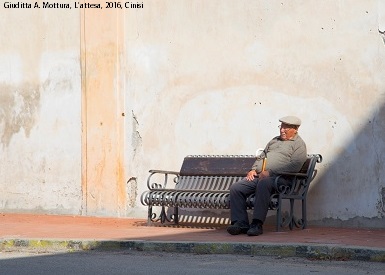Communication of crisis or crisis of communication? The conflicting “voices” of the covid 19 pandemic across the world
DOI:
https://doi.org/10.54103/2035-7680/19124Parole chiave:
Crisis communication; Pandemic; Rhetorical Arena Theory; Pragmatics; MetaphorAbstract
After the outbreak of the coronavirus pandemic in China in December 2019, information spread globally as fast as the virus. Different stakeholders confronted daily in the rhetorical arenas of social media within and across countries, thus providing a bewildering view of the impact of COVID-19 on communication. This paper aims at investigating the crisis of communication during the first wave of the pandemic, drawing upon the rhetorical arena communication model (Johansen and Frandsen 2017). This model, which entails a macro- and a micro-layer of analysis, allows us to recognize the complexity of the inter-actorial relations taking place between various “voices”, e.g., political and economic actors, international organizations, healthcare professionals, and the media, who compete or collaborate to manage the crisis. In this regard, research is carried out on a set of corpora, including press releases issued by the WHO, political speeches released by Donald Trump and Boris Johnson, as well as reactions to them provided by public opinion via diverse social media outlets, in the period between January and June 2020. Attention is paid to the micro-level of the arena, in particular some specific “text” parameters, namely the verbal and visual semiotic adopted, the crisis communicative strategies of scapegoating and counterattack, metaphors and speech acts.
Metriche
Riferimenti bibliografici
Alam, Firoj, et al. “Fighting the COVID-19 Infodemic: Modeling the Perspective of Journalists, Fact-Checkers, Social Media Platforms, Policy Makers, and the Society.” Findings of the Association for Computational Linguistics, 2021, pp. 611–649.
Austin, John L. How To Do Things With Words. Harvard University Press, 1962.
Bourdieu, Pierre. Language and Symbolic Power. Translated by Raymond, Gino, and Matthew Adamson. Edited and introduced by Thompson, John B. Polity Press in association with Basil Blackwell, 1992.
Blum-Kulka, Shoshana, and Elite Olshtain. “Requests and apologies: A cross-cultural study of speech act realization patterns (CCSARP).” Applied Linguistics, vol. 5, no. 3, 1984, pp. 196-213.
Brown, Penelope, and Stephen C. Levinson. “Universals in language usage: Politeness phenomena.” Questions and politeness: Strategies in social interaction, edited by Esther N. Goody, Cambridge University Press, 1978, pp. 56-289
Burke, Kenneth. Language as Symbolic Action. University of California Press, 1966
Cinelli, Matteo, et al. “The COVID-19 social media infodemic.” Sci Rep 10, 16598, 2020, pp. 1-10.
Coombs, W. Timothy, and Sherry J. Holladay, editors. The Handbook of Crisis Communication. John Wiley & Sons, 2010.
--- “How publics react to crisis communication efforts Comparing crisis response reactions across sub-arenas.” Journal of Communication Management, vol. 18, no. 1., 2014, pp 40-57
Eriksson, Mats, and Eva-Karin Olsson. “Facebook and Twitter in Crisis Communication: A Comparative Study of Crisis Communication Professionals and Citizens”. Journal of Contingencies and Crisis Management, vol. 24, no. 4, 2020, pp. 198-208.
Frandsen, Finn, and Winni Johansen. Organizational crisis communication: A multivocal approach. Sage, 2017
--- “Corporate crisis communication across cultures”. Pragmatics across Languages and Cultures, edited by Anna Trosborg. De Gruyter Mouton, 2010, pp. 543-570.
Freckelton, Ian QC. “COVID-19: Fear, quackery, false representations and the law.” International Journal of Law and Psychiatry, vol. 72, 2020, pp. 1-11.
Hearit, Keith Michael. “Apologies and public relations crises at Chrysler, Toshiba, and Volvo.” Public Relations Review, vol. 20, no. 2, 1994, pp. 1-17.
--- Crisis Management by ‘apology’: Corporate Response to Allegations of Wrongdoing. Lawrence Erlbaum Associates, Publishers, 2006.
Kitis, Eliza. “Conditional Constructions as Rhetorical Structures.” Working Paper in Linguistics, 2004, pp. 30-51.
Kouzy, Ramez, et al. “Coronavirus Goes Viral: Quantifying the COVID-19 Misinformation Epidemic on Twitter.” Cureus, vol. 12, no. 3, 2020, pp. 1-9.
Lakoff, George, and Mark Johnson. Metaphors We Live By. University of Chicago Press, 1980.
Mercieca, Jennifer R. Demagogue for President: The Rhetorical Genius of Donald Trump. Texas A & M University Press, 2020.
Millar, Frank E., and Debra Baker Beck. “Metaphors of crisis.” Responding to crisis: A rhetorical approach to crisis communication, edited by Millar, Dan Pyle & Robert L. Heath, Lawrence Erlbaum Associates, 2004, pp. 153–166.
Prieto-Ramos, Fernando, et al. “Institutional and news media denominations of COVID-19 and its causative virus: Between naming policies and naming politics.” Discourse & Communication, vol. 14, no. 6, 2020, pp. 635–652.
Raupp, Juliana. “Crisis communication in the rhetorical arena.” Public Relations Review, vol. 45, 2019, pp. 1-12.
Rodin, Pavel, et al. “Disentangling rhetorical subarenas of public health crisis communication: A study of the 2014–2015 Ebola outbreak in the news media and social media in Sweden.” J Contingencies and Crisis Management, vol. 27, 2019, pp. 237-246.
Schiffrin, Amanda. Modelling Speech Acts in Conversational Discourse. PhD thesis, University of Leeds, 2005.
Searle, John R. “A classification of illocutionary acts.” Language in Society, vol. 5, no. 1, 1976, pp. 1-23.
Searle, John R., and Daniel Vanderveken. Foundations of Illocutionary Logic. Cambridge University Press, 1985.
Shahi, Gautam Kishore, et al. “An Exploratory Study of COVID-19 Misinformation on Twitter.” Online Social Networks and Media, vol. 22, 2021, pp. 1-14.
Trosborg, Anna. “An analysis of legal speech acts in English Contract Law.” Hermes, vol. 6, 1991, pp. 65-90.
Válková, Silvie. “Speech acts or speech act sets: Apologies and compliments.” Linguistica Pragensia, vol. 23, no. 2, 2013, pp. 44-57.
Vosoughi, Soroush, et al. “The spread of true and false news online.” Science, vol. 359, 2018, pp. 1146–1151.
Wallisa, Patrick, and Brigitte Nerlich. “Disease metaphors in new epidemics: the UK media framing of the 2003 SARS epidemic.” Social Science & Medicine, vol. 60, 2005, pp. 2629–2639.
Wicke, Philipp, and Marianna M. Bolognesi. “Framing COVID-19: How we conceptualize and discuss the pandemic on Twitter.” PLoS ONE, vol. 15, no. 9, 2020, pp. 1-24.
Dowloads
Pubblicato
Come citare
Fascicolo
Sezione
Licenza

Questo articolo è soggetto a licenza Creative Commons Attribution-NonCommercial-NoDerivatives 3.0 International License.




